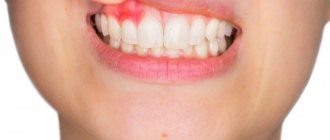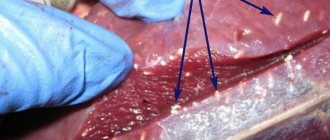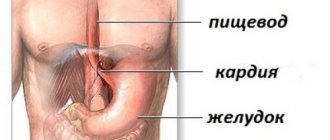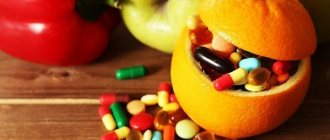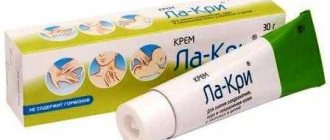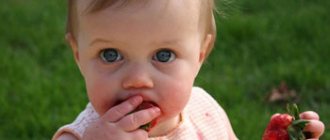Questions regarding gynecological diseases accompany us constantly throughout our lives. The etiology of diseases has a different nature. The intensity of gynecological diseases depends on age, individual physiological characteristics, nonspecific living conditions, lifestyle and behavior. Young women more often suffer from diseases of the genital organs caused by urogenital infections. The result of gynecological ailments is frequent inflammation and dysfunction of the reproductive organs.
Mature women, women who have given birth, and older patients are familiar with many gynecological diseases caused by disruptions in hormonal balance, indicating the approach of the postmenopausal period.
Despite the different nature of gynecological diseases, the distinct pathogenesis of each pathology, many ailments are united by the main cause, the weakened immunity of the female body. Women's diseases begin to progress in a weakened body. The background regime in which most diseases occur leads to the layering of some diseases on top of each other. The result of this course of the disease is the appearance of a precancerous condition, the subsequent occurrence of benign and malignant neoplasms.
In gynecology, the technique and tactics of treating female diseases is based on eliminating the impact of negative factors on the patient’s body and carrying out activities that increase the strength of immune processes in the body. An effective element of effective treatment is a complex of medications and physiotherapeutic measures, which include the normalization of a woman’s nutrition. The diet allows you to improve the physiology of a woman’s body, replenish the missing amount of microelements and vitamins, which help strengthen the immune system.
Preparing a diet is one of the most important tasks, which is carried out by nutritionists on the recommendation of gynecologists. Women try to make their diet balanced. It is necessary to include a variety of food products and components in the diet; the order of meals is determined. Any innovations in nutrition are aimed at strengthening the body’s protective functions and improving overall tone. In such situations, the use of extreme measures such as mono-diets and forced fasting is contraindicated. An exhausted body will not be able to successfully fight inflammatory processes, and complications are likely to occur.
What is candidiasis
Candidiasis is caused by yeasts of the genus Candida.
These microorganisms are classified as opportunistic. They are detected on the mucous membranes of the intestines and genitals. If the immune system is strong, it can control the number of fungi, but when it decreases, microorganisms begin to multiply uncontrollably, causing inflammation of the mucous membrane and other manifestations of the disease. The following unfavorable factors contribute to the development of candidiasis:
- insufficient hygiene;
- dysbacteriosis;
- alcohol abuse;
- improper installation of catheters;
- taking antibiotics;
- diabetes;
- a sharp decrease in immunity;
- avitaminosis;
- stress, etc.
Alcohol contributes to the development of candidiasis.
In addition, consuming foods rich in refined carbohydrates and sugar increases the risk of developing this fungal disease. Symptoms of candidiasis depend on which organ is affected.
Manifestations of the most common urogenital type of disease include:
- itching;
- redness of the mucous membrane;
- curdled discharge;
- discomfort during sexual intercourse;
- unpleasant odor;
- burning.
When the oral area is affected, a white coating appears on the tongue. In addition, the formation of cracks and gray plaques is possible. The mucous membrane turns red and swells.
Risk factors, causes and symptoms
There are more than 20 species of Candida fungi that can cause infection in humans. The most common is Candida albicans, a single-celled fungus that is always present in the genital and intestinal tracts. Candida yeast usually lives on the skin and mucous membranes without causing infection, but an overgrowth of these organisms can cause problematic symptoms to develop in the body. Some risk factors for candida include diabetes, conventional cancer treatments, and treatment of asthma with corticosteroid inhalers. According to official data, there are about a dozen recognized causes of microbiome dysfunction and candida overgrowth. There may be several reasons for the appearance of candidiasis:
- Changes in normal hormonal balance, including pregnancy, birth control pills, and estrogen therapy. Fluctuations in hormonal levels lead to the fact that the immune system cannot cope with such a load and gives weakness, which the yeast takes advantage of.
- Frequent use of antibiotics that kill beneficial bacteria of the mucosal microflora. Therefore, after completing a course of treatment without the use of probiotics, thrush appears.
- Uncontrolled diabetes, which can cause high sugar levels (it stimulates yeast growth).
- A sharp decrease in immunity. There may be several factors here, ranging from long-term illness to increased physical activity, overwork, and other factors.
- Obesity of various degrees. The sweat that forms on the skin is an excellent breeding ground for candidiasis.
- Tight-fitting and synthetic clothing that retains moisture and warmth. Fabric based on synthetic threads, which fits tightly to the body, can disrupt the natural microflora, which results in thrush.
- Violation of personal hygiene. A diet for thrush in women will not help if you do not follow the rules of personal hygiene. Yeast can enter the body in various ways, from transport to public places. To avoid problems, you need to regularly wash your hands with soap, use antiseptics, and wash your clothes with high-quality products.
- Nutrition problems, insufficient amounts of nutrients, vitamins, minerals.
- Increased consumption of alcoholic beverages, smoking.
- Drinking tap water. Its exact composition remains unknown, and some substances may have a negative impact on overall health.
- The occurrence of stressful situations that negatively affect the entire body as a whole.
- Environmental disturbances and the entry of harmful chemicals into the body with further poisoning.
- Allergic reactions. May also be the cause. This could be new washing powder, unsuitable clothing fabric or shower gel, sanitary pads and tampons. Recently, many people have experienced a reaction in the form of thrush after contact with latex, visiting a gynecologist, etc.
Find out the causes of excess weight and ways to quickly lose weight
Sign up for a free initial appointment with a nutritionist!
According to recent studies, it is possible to cope with thrush and prevent its occurrence not only with medication. A properly structured diet for candidiasis and the use of probiotic complexes will allow you to forget about this problem once and for all. And it all started with the fact that sugar is recognized as the main nutrient medium for the development of this yeast strain.
- As soon as this strain of yeast appears in the mucous membranes, a sharp craving for sweets appears, bad breath, a white coating on the tongue, dizziness and nausea, hormonal imbalance, joint pain, loss of libido, chronic problems with the sinuses and allergies, problems with digestion. Symptoms may worsen in damp or moldy environments or after eating foods containing sugar or yeast. If left untreated, thrush will weaken the immune system, opening the door to more serious illness.
It should be noted that candidiasis cannot be gotten rid of so easily. There are a number of side effects caused by this disease, as well as by eliminating the cause. These include impaired brain function, headache, fatigue, dizziness, intestinal problems including bloating, gas, constipation and nausea, sweating and fever, skin problems, and typical flu symptoms. On the subject: Diet for vascular atherosclerosis All this usually goes away in 7-10 days. Within a few weeks, you will notice an increase in energy and attention, as well as relief from other symptoms. Therefore, when the so-called “withdrawal syndrome” begins in the area of harmful yeast, it’s time to celebrate, because soon it will all be gone, once and for all, thanks to the diet for candidiasis of the intestines and other organs.
Authorized Products
A diet for thrush requires the inclusion in the diet of foods rich in protein and plant fiber.
These include:
- Meat products: lean beef, turkey, chicken, rabbit.
- Seafood: lean fish, kelp, mussels, oysters.
- Vegetables and herbs: dill, parsley, onions, broccoli, cauliflower, cucumbers, green peas, carrots, sorrel, celery, spinach, eggplant, radish, zucchini, etc.
- Berries: viburnum, currants, grapefruit, lingonberries, currants, rowan.
- Fruits: lemons, oranges, apples, pomegranates.
- Seasonings: garlic, black pepper, oregano, bay leaf, cloves, cinnamon.
- Dairy products: low-fat cottage cheese, biokefir, fermented baked milk, natural yogurt.
- Cereals and porridges: buckwheat, brown and brown rice, oatmeal.
- Oils: sunflower, olive, corn, butter.
- Eggs: quail and chicken.
- Drinks: tomato and carrot juices, lingonberry and pumpkin fruit drinks, mineral water.
For candidiasis, meat products are allowed.
To compensate for a possible lack of protein and nutrients, it is advisable to introduce seeds and nuts into the diet.
You can consume whole wheat pasta and whole grain bread in limited quantities.
During pregnancy
During pregnancy, a woman experiences changes in her body and pronounced hormonal changes.
This creates conditions for the activation of pathogenic fungi that cause candidiasis. If symptoms of this disease begin to appear after conception, you should consult a doctor who can select medications that are safe for the fetus. Women planning to become pregnant are advised to follow a special diet in advance. The diet is selected so that it satisfies the body’s needs for vitamins, minerals and other substances, but does not contribute to the growth of pathogenic fungi.
During this period, you need to exclude foods containing easily digestible carbohydrates, incl. confectionery, honey, sugar, etc. You should stop eating foods that have been prepared with yeast. In addition, you should not consume milk or cream during treatment. It is also important to exclude cereals and vegetables with a high starch content, as well as sweet fruits and drinks made from them.
The basis of the diet should be the following products:
- lean varieties of fish and meat;
- eggs;
- cabbage;
- salad;
- cucumbers;
- turnip;
- zucchini;
- carrot;
- seaweed;
- sprouted grains;
- eggplant;
- tomatoes;
- legumes;
- low-fat sour cream;
- tofu cheese;
- kefir;
- pickled vegetables.
Pregnant women need to follow a diet.
In addition, it is recommended to use compotes and decoctions of cranberries, currants and lingonberries. Be sure to drink carrot, pumpkin and citrus juices.
Recommendations for preparing a diet
If the first signs of gynecological disorders appear, it is necessary to undergo a medical examination. In addition to medical recommendations that determine the tactics and methods of treatment, it is important to pay attention to the preparation of the correct diet. Dietitians, analyzing the medical history and taking into account the data of diagnostic studies, develop a special nutrition program.
General recommendations regarding a woman’s diet when identifying diseases come down to limiting the consumption of a number of foods. Previously familiar, traditional dishes based on fatty animal products will have to be put aside. In the daily diet, the amount of meat and fatty components should not exceed 10-20%, while the share of fresh vegetables, herbs and fruits increases significantly. The best option for complex treatment of gynecological diseases is to switch to vegetarian food.
One of the most important nutritional components for women with gynecological problems is fiber. Fruits, most vegetables and cereal products contain sufficient fiber. The only nuance that you should pay attention to is that it is better to eat baked goods made from white, wheat and rye flour. Thus, everyone’s favorite black bread, which is made from wholemeal rye flour, can contribute to the development of bloating and flatulence. The best option to diversify your diet would be to switch to bran bread, baked goods made from bran flour with seedings.
Porridge will be a good help in the updated diet, but their quantity should not prevail. In a semi-liquid state, millet, buckwheat and barley porridge are perfectly absorbed by the stomach, giving the body a large amount of minerals and useful components. When switching to a gentle diet, you should also change your food preparation methods. Instead of frying over an open fire, preference should be given to boiled foods. Steamed or grilled vegetables retain essential components. Precious fiber retains its structure and enters the body in its natural form. Eating foods high in fiber normalizes stool. Frequent constipation is one of the unpleasant concomitant manifestations of gynecological disorders. The resulting internal pressure in the intestines affects the internal organs of the small pelvis, as a result of which the intensity of pain increases.
If there is a shortage of fatty foods, the body needs fatty acids. The absence of pork and other fat-containing products in the diet can be made up for by consuming sunflower or olive oil. Fatty acids form the cellular structure, with their participation the hormone synthesis cycle is formed.
Dairy products have a beneficial effect on restoring the body's protective functions. Thanks to the extensive range, today you can freely choose dairy products to suit every taste. Consumption of dairy products helps restore the microflora of the vagina and intestines. The presence of iron and other microelements in dairy products strengthens the vaginal mucosa and helps increase the protective functions of the epithelium of the cervical walls. When creating a diet, low-fat foods are perfect. Milk, sour cream and yoghurt contain sufficient amounts of calcium and protein. Butter will supplement the diet with fatty acids.
List of foods that need to be excluded from the diet
It is extremely important to exclude from the diet all foods that can activate the growth of fungi.
When preparing dishes, salt can be replaced with a small amount of vinegar or lemon juice. The list of foods not recommended for consumption with thrush includes:
- rye;
- barley;
- wheat;
- bananas;
- raisin;
- dates;
- grape;
- mango;
- peanut;
- cheese;
- full fat milk;
- soy sauce;
- sugar;
- confectionery;
- ketchup;
- fatty meats and fish;
- sausages;
- honey;
- cream, etc.
Bananas should be excluded from the diet.
You should avoid drinking sugary carbonated drinks, concentrated fruit juices and alcohol.
In addition, it is necessary to exclude all products containing artificial sweeteners, nitrates and sulfates.
Foods that are undesirable to eat if you have thrush
Unfortunately, with candidiasis, many of the usual and favorite products must certainly be included in the stop list. First of all, this concerns excessive consumption of sweets. This ban is generally associated with the negative impact of simple carbohydrates on a woman’s health, especially if there is a problem such as metabolic disorders. You will have to give up fast food too; semi-finished products; canned food (including fish); delicacies and smoked meats; food containing yeast among its ingredients; carbonated drinks and factory-made juices. It is better not to eat anything that takes a long time to digest, such as legumes. Even nuts – cashews and peanuts – are considered harmful due to the possible presence of mold in them.
It is also worth excluding products that contain various chemical additives: preservatives, flavor enhancers, dyes, artificial flavors, as these substances reduce immunity, negatively affect the functioning of the gastrointestinal tract and can cause allergies.
A truly prohibited product is alcohol (strong drinks and wine), the use of which can provoke a recurrence of thrush. This is due to the high content of carbohydrates and yeast in it.
So, the restrictions include:
- chocolate, sweets, pastries and cakes, ice cream;
- sweet fruits (grapes, bananas, tangerines), melon, watermelon, jam, honey, syrups;
- dried fruits: raisins, figs, dates, lesson, dried apricots;
- mushrooms;
- blue cheese;
- sour cream;
- flour, white bread, pastries;
- white polished rice;
- semolina;
- beans;
- sweet potatoes, corn;
- peas, lentils;
- pumpkin, zucchini;
- boiled red beets, boiled carrots;
- parsnip, radish, white radish;
- avocado;
- peanuts, cashews;
- mayonnaise, ketchup, mustard, vinegar, soy sauce, horseradish;
- pickles, canned cucumbers and tomatoes;
- rapeseed, peanut, corn oil;
- animal fats;
- pork, duck;
- beer, kvass
General rules of nutrition in the presence of illness
The diet should be followed not only throughout the active period of the disease, but also for at least one and a half months after the symptoms have resolved. The calorie content of the diet should be 1900-2200 kcal per day. Be sure to drink at least 1.5 liters of water. In this case, the share of plant foods should reach 60%. If possible, dishes should be prepared without adding salt and spices. Thermal processing of products is carried out by boiling, stewing, steaming, etc.
For thrush in women
In women, thrush occurs with severe symptoms and often becomes recurrent, so it is necessary to limit as much as possible the consumption of products that provoke the rapid proliferation of pathogenic microflora.
It is necessary to limit the consumption of foods that provoke the proliferation of microflora.
It is necessary to introduce into the diet foods that have antifungal and antibacterial effects. Natural yoghurts, low-starch vegetables, seafood, herbs and garlic are extremely healthy. In addition, it is recommended to drink teas made from alfalfa, chamomile, clover, etc.
For candidiasis in men
In men, candidiasis with pronounced manifestations is rare.
This disease requires a diet that enhances immunity. Men are advised to increase their intake of protein-rich foods and, if possible, avoid foods containing large amounts of simple carbohydrates. In this case, a special diet should be followed for at least 4-12 months to reduce the risk of relapse of the disease. During the period of therapy it is necessary to avoid alcoholic beverages, sauces and hot spices. Preference should be given to easily digestible dishes.
Symptoms of thrush in the esophagus and stomach
Fungal infections of the esophagus and stomach are rare.
In most cases, this disease occurs with a severe decrease in immunity. Characteristic manifestations of candidiasis of the esophagus and stomach include:
- heartburn;
- discomfort when swallowing;
- sore throat;
- vomiting with mucus discharge;
- decreased appetite;
- stool disorders;
- feeling of a lump in the throat.
Heartburn is manifested by discomfort or a burning sensation in the chest.
This type of thrush is characterized by a long latent period of the disease. This results in a delay in starting treatment. The examination reveals redness and swelling of the mucous membrane of the esophagus and stomach, as well as a characteristic white coating.
In the later stages of development of the pathology, deep layers of tissue are affected, which leads to the formation of ulcers and scars.
Thrush during pregnancy
The development of vaginal candidiasis during pregnancy is dangerous for the expectant mother and the fetus. There is an increasing threat of the development of inflammatory processes during pregnancy, postpartum complications, and infection of the fetus, which can lead to fungal infection of its organs and even death. It is possible that the baby may become infected during childbirth. Treatment of thrush in pregnant women is complicated by the ban on taking antifungal drugs orally. Local treatment with vaginal tablets and suppositories is acceptable (Pimafucin is considered the safest among them during pregnancy). All the more important is the observance of personal hygiene rules, as well as protection from stress, proper nutrition with sufficient vitamins, walks, healthy sleep, which help strengthen the natural immune defense. If signs of thrush appear in a pregnant woman, she should immediately contact an obstetrician-gynecologist in order to carry out timely, adequate treatment and avoid complications.
For diagnosis and successful treatment of vaginal candidiasis, come to the Clinical Hospital on Yauza. You can see
prices for services Make an appointment
Diet for intestinal candidiasis
You need to consume as many fermented milk products as possible, which contain a lot of lactobacilli.
This will help restore normal microflora. The diet should include foods that are not capable of damaging the already inflamed mucous membrane. Recommended ones include:
- all types of cabbage;
- natural yogurt;
- biokefir;
- cottage cheese;
- bird;
- lean meat;
- seafood;
- whole oatmeal;
- brown rice porridge;
- buckwheat;
- artichokes;
- leek;
- Jerusalem artichoke;
- apples;
- beans;
- natural juices from cranberries and wheat germ, etc.
For intestinal candidiasis, cabbage is recommended.
For intestinal candidiasis, drinking plenty of fluids is recommended. You can drink rosehip decoction, chamomile tea, and non-acidic freshly squeezed juices. In this case, you need to give up yeast bread and pastries, sugar, honey, confectionery and other foods rich in simple carbohydrates.
Dinner is served!
Sample menu for the week
Getting pleasure from food, turning every dish into a tasty medicine - this is the principle of culinary tasks and experiments during the treatment of thrush and consolidating its results.
Monday
Breakfast - buckwheat porridge, green tea with lemon. 2nd breakfast - yogurt, biscuits Lunch - vegetable soup with chicken broth, boiled chicken breast, herbal tea. Afternoon snack - green apple. Dinner - green salad dressed with olive oil and lemon juice, boiled chicken liver, chamomile tea.
Tuesday
Breakfast - low-fat cottage cheese with seasonal berries, green tea. 2nd breakfast - fruit salad. Lunch - salad of tomatoes and onions, boiled veal, rosehip infusion. Afternoon snack - fresh grapefruit. Dinner - bell peppers stewed with onions and tomatoes, steamed turkey fillet, herbal infusion.
Wednesday
Breakfast - oatmeal with water, green tea. 2nd breakfast - apple baked with berries. Lunch - salad of cabbage, celery, dill, seasoned with flaxseed oil; turkey stewed with herbs, compote. Afternoon snack - a cup of herbal tea. Dinner - steamed fish, mashed potatoes, a cup of chicory.
Thursday
Breakfast - egg, toast, green tea with lemon. 2nd breakfast - yogurt. Lunch - vegetable puree soup, peppers stuffed with beef and brown rice, fruit juice. Afternoon snack - nuts. Dinner: cottage cheese casserole, chamomile tea.
Friday
Breakfast - omelet with tomatoes, green tea. 2nd breakfast - favorite fermented milk product. Lunch - vegetable soup; fish cooked with lemon in foil, fresh juice. Afternoon snack - pear. Dinner - cabbage rolls, rosehip infusion.
Saturday
Breakfast - millet porridge, fruit tea. 2nd breakfast - yogurt. Lunch - seafood, green salad. Afternoon snack - yogurt, crackers. Dinner - seaweed salad, fish cakes, green tea.
Nutrition for oral candidiasis
For thrush of the oral mucosa, it is necessary to adhere to the same recommendations regarding nutrition as for intestinal damage. The diet should be gentle and at the same time help improve immunity.
Cooking food has a great influence on its final properties.
Cooking Features
To quickly eliminate the symptoms of oral candidiasis, you need to eat dishes prepared using gentle methods, incl. by cooking, steaming and stewing. Porridges should be made slimy. When preparing dishes, do not use salt or hot spices.
Recommended Products
If the oral mucosa is damaged, vegetables and fruits with low acid content can be introduced into the diet.
Recommended foods and dishes include:
- cauliflower;
- lean varieties of fish and meat;
- bird;
- dairy products;
- slimy porridge;
- compotes;
- boiled fruits, etc.
If the oral mucosa is damaged, include cauliflower in your diet.
It is permissible to consume dried unleavened bread in limited quantities.
What not to eat if you have thrush
Following your doctor’s recommendations for a healthy and nutritious diet and comprehensive treatment for oral candidiasis is the key to a speedy recovery. But there is a list of ingredients that must be excluded from your diet.
It is important to carefully ensure that they do not end up on the menu either raw or as part of any complex dishes.
So, you will have to stop using:
- Black tea. There is a possibility of the formation of invisible mold, which will have a detrimental effect on the patient’s health.
- Mushrooms of both forest and industrial origin.
- Buttermilk and sour cream. The only exception is fresh sour cream with a small percentage of fat.
- Mayonnaise, cheese.
- Dried fruits, since their surface may contain tiny mold.
- Drinks obtained on the basis of fermentation. This category includes strong alcohol, wine, beer, cider, kvass, mead, etc.
- Sprouted grains.
- Dishes containing monosodium glutamate. These are ketchups, ready-made wet condiments and soups, various dressings, all types of fast food.
- Vinegar. The only exception is apple.
- Medicines made from yeast. These are antibiotics, vitamin-mineral complexes, etc.
- Products containing refined white flour. This category of dishes includes sweet pastries, buns, cookies, pasta, muesli, etc.
- The ideal solution would be to replace animal fats with plant analogues.
- Sausages, fatty meats, various corned beef.
During the period of exacerbation of the disease, experts recommend excluding these dishes from the diet. Only after complete recovery and completion of the course of treatment should it be gradually introduced, observing the condition of the body. At the first alarming symptoms, it is necessary to contact a specialist in order to adjust the existing diet and continue treatment.
Carbohydrates are prohibited
A strict no-carbohydrate diet has worked well. It involves complete abstinence from foods such as:
- Sugar. It is important to exclude any form of it (honey, sand, condensed milk, refined sugar, syrups, etc.).
- All types of sweeteners (fructose, maltose, glucose, sorbitol).
- Any candy, as well as all types of chocolate.
- Sweet carbonated drinks, as well as packaged and bottled juices.
- Fruits and berries with a high sugar content (watermelon, raspberries, strawberries, bananas, grapes, melons, apples, etc.).
- Dairy products and milk. The only exceptions are fermented baked milk, live yogurt and fresh kefir.
- Vegetables with a high starch content. Potatoes and legumes can be consumed only a couple of times a week in the absence of alarming symptoms and persistent positive dynamics of the pathological process.
A no-carbohydrate diet requires some effort from a person. But after a few days the patient notices an improvement in his condition. By continuing treatment and adhering to the same meal plan, it is possible to obtain lasting positive dynamics.
Menu for oral candidiasis
Fungal diseases require a balanced diet. A proper diet includes a variety of foods. A strict diet does not mean eating just a few ingredients. If desired, you can develop a full menu for every taste. Let's consider possible food options for breakfast, lunch and dinner.
Breakfast for thrush
- Fresh cucumber salad, scrambled eggs, unsweetened green tea and whole grain bread;
- Sour cream and cottage cheese with a small percentage of fat, apple-carrot or carrot juice;
- Freshly squeezed orange juice, omelette;
- Tomato and herb salad, boiled eggs;
- Not sweet green tea and fruit salad in small quantities;
- Assorted nuts and oatmeal without sugar;
- Boiled fish or lean meat;
- Brown rice with boiled fish.
The main thing is to carefully monitor the absence of simple carbohydrates, and also avoid excessive consumption of dairy products.
Afternoon snack or snack
Meals for thrush should be fractional and as healthy as possible. Therefore, experts have developed several healthy snack options that can satisfy hunger and free a person from the desire to eat prohibited foods.
So, what can you snack on during the day:
- Green apple. It can be baked, steamed or fresh.
- A small handful of nuts.
- Live yogurt or kefir.
- Whole grain bread in small quantities, as well as homemade cheese.
- Orange or orange juice.
- Apple with low-fat cottage cheese.
Using the above products to satisfy hunger between main meals, the patient not only follows a diet, but also provides the body with necessary vitamins and minerals. This diet helps to activate the immune system and speed up the healing process.
Dinner
Among the allowed foods for oral thrush, experts include:
- Vegetable soups;
- Casseroles from lean meats;
- Boiled chicken breast and carrot salad;
- Tomato soup;
- Lean fish casserole;
- Pea soup;
- Buckwheat porridge or soup;
- Boiled or steamed vegetables;
- Lentil soup;
- Boiled meat;
- Steam cutlets;
- Beetroot;
- Chicken soup;
- Seafood.
Eating properly selected meals provides a complete diet, and split meals normalize metabolism and promote recovery.
Dinner dishes for oral candidiasis
Nutritionists suggest choosing several dishes for dinner as a tasty and healthy menu:
- Baked (or steamed) vegetables;
- Vegetable stew without seasoning;
- Eggplant cooked with rice;
- Potato roll with vegetables;
- Stuffed cabbage rolls;
- Zucchini or carrot fritters;
- Dumplings with cabbage or potatoes based on rye flour;
- Vegetable Salad.
To make your diet as healthy and effective as possible, you can follow a few simple rules:
- Purchase meat and fish products only from trusted places. Or on farms. Partially or completely replace pork with rabbit and lamb.
- Stop eating fried meat and switch to boiled or stewed foods.
- Introduce quail or turkey meat into your diet.
- Partially replace meat products with chicken or quail eggs.
- Reduce the amount of vegetable fats. Switch to steam or non-stick pan cooking. It is also better to reduce the consumption of animal fats.
- Increase the consumption of homemade fermented baked milk, yogurt, etc.
- Increase the amount of fiber in your diet.
Avoid eating fast food and processed foods. The manufacturer often includes components that are prohibited for you. This reduces to zero all the efforts spent on treating oral candidiasis. Strictly follow the recommendations of specialists, stick to your diet, and then the fight against thrush will be successful!
Dish recipes
There are many delicious dishes that can be prepared from products recommended for candidiasis. You should consider recipes for simple first and second courses.
Zucchini pancakes
To make zucchini pancakes you will need the following ingredients:
- young zucchini - 3 pcs.;
- onion - 1 pc.;
- carrots - 1 pc.;
- eggs - 2-3 pcs.;
- greens - a bunch.
Zucchini pancakes are a vegetable dish made from zucchini.
The zucchini is peeled and ground. The pulp is slightly salted and after 15 minutes the released juice is eliminated. Grate the carrots and cut the onion into small cubes. All components are mixed.
Chopped herbs and eggs are added to them. Cutlets are formed from the resulting mixture and fried in olive oil.
Omelette with spinach
Another delicious dish that can be consumed when treating candidiasis is spinach omelette.
To prepare it you will need:
- eggs - 2-3 pcs.;
- milk - 2 tbsp;
- spinach - 80 g.
Spinach omelette is a delicious and quick breakfast option.
First you need to wash and chop the greens. Then fry the spinach for 1-2 minutes in a hot frying pan with olive oil. Combine eggs with milk and beat lightly. After this, pour the mixture into the pan and close the lid. The finished dish can be sprinkled with fresh herbs.
Beet salad
This salad can be prepared quickly if you already have cooked beets. This vegetable must be grated on a coarse grater, and a crushed clove of garlic must be added to the mixture. It is recommended to dress the salad with low-fat sour cream.
Beetroot salad is tasty, healthy and safe for your figure.
Green borscht with sorrel
Among the dishes that are acceptable to eat for candidiasis, such a tasty dish as green borscht stands out.
To prepare it you will need:
- broth - 2.5 l;
- onion - 1 pc.;
- potatoes - 3-4 pcs.;
- carrots - 1 pc.;
- spinach - 1 bunch;
- sorrel - 1 bunch;
- tomato paste - 1-2 tbsp;
- olive oil - 30 g.
Green borscht with sorrel is the first dish that is best prepared in the summer.
The potatoes are peeled and cut into large cubes. The carrots should be grated, the onions should be chopped into small pieces, and the greens should be cut into thin strips.
Potatoes are added to the boiling salted broth. Carrots and onions are lightly fried in vegetable oil. Tomato paste is then added to these vegetables. After 3-5 minutes of simmering, remove the roast from the heat. When the potatoes are almost cooked, frying and chopped herbs are added to the broth. After 10 minutes the dish is ready.
Steam omelette
Steamed omelet is another dish that can be quickly prepared at home.
Steam omelet is a nutritious egg dish.
To do this, break 2 eggs into a container and add 2-3 tbsp to them. milk. Then place the container with the egg mixture in a colander, and place it in the pan so that it does not touch the water poured to the bottom. The omelette should be cooked for 10-15 minutes.
Medical recommendations and reviews from doctors
Svetlana, 42 years old, Rostov-on-Don: “Working as a gynecologist, I always recommend that patients suffering from thrush, in addition to drug treatment, follow a gentle diet.
This helps to quickly suppress fungal activity and eliminate symptoms.” Irina, 38 years old, Moscow: “As a nutritionist for candidiasis, I often advise patients to follow a gentle diet. Proper selection of foods and their preparation increases immunity and reduces the risk of recurrent disease.” [media=
https://youtu.be/pFPvt5mzfzA
]
Reviews and results
Elena, 28 years old, St. Petersburg: “Since I was 16 years old, I often suffer from candidiasis.
I was treated many times with antifungal agents, but it only helped for a while. I started following a diet. Relapse rates have decreased." Tatyana, 32 years old, Belgorod: “After the birth of my first child, I encountered thrush for the first time. On the doctor's recommendation, she was treated with antifungal agents. The result was, the symptoms disappeared. However, after 6 months the disease reappeared. On the advice of a specialist, she began to follow a gentle diet and underwent a course of drug treatment. There have been no relapses for a year now.”
